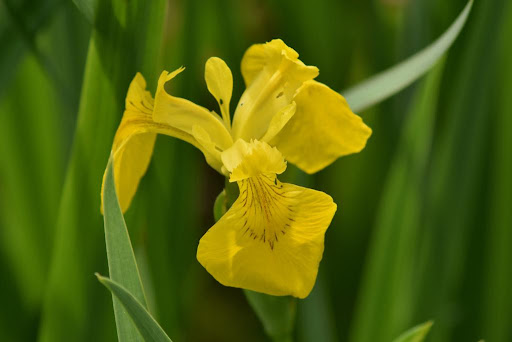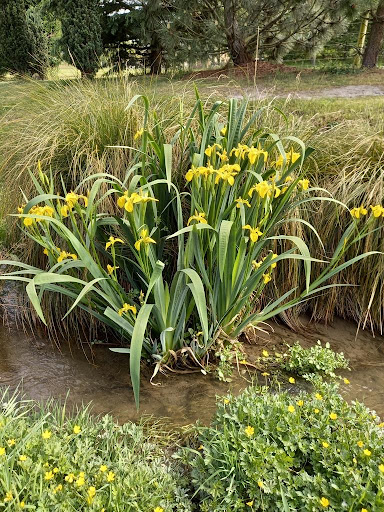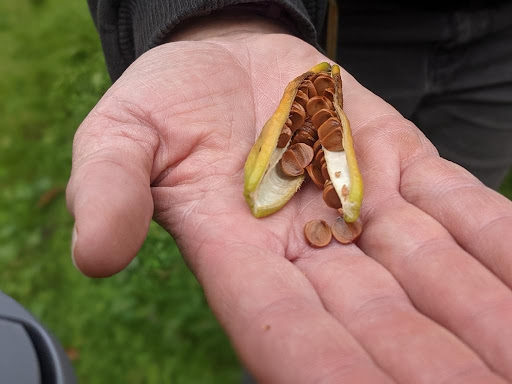This perennial wetland plant has three drooping petal flowers that are bright yellow, but sometimes have brown spots or purple veins. The flowers, which bloom from April through July, form at the top of stems which can be between 3 cm–1 m tall. The leaves can be up to 90 cm long and 3 cm wide, and are generally a flat, sword-like shape.
Yellow Iris prefers shorelines, ditches, wetlands, and shallow ponds. It reproduces through propagation from broken off pieces of rhizomes, horizontal root dispersal, and seed dispersal. The underwater horizontal root system forms thick mats which reduces water flow, crowds out native species, dries out wetlands, and is poisonous when consumed by both humans and animals. The seeds float on the water in spring and fall, and can be carried far distances along the current.
Introduced to North America as an ornamental plant for ponds and water gardens.

Blue Flag Iris is a beautiful, vibrant iris that is native to Nova Scotia.
Yellow iris is the only Iris in North America with entirely yellow flowers.



The first-recorded sighting of Yellow Iris in Canada occured in Newfoundland.
Learn the scientific name to ensure you plant native species only in your garden. Promote the use of native plants in gardens and encourage garden centers to avoid stocking invasive plants. If removing Yellow Iris from private property be sure not to burn or compost the plant, but instead double bag it and leave it in the sun to rot, then discard. If you spot this invasive species, report the location to iNaturalist or directly to the NSISC.
Join our mailing list.